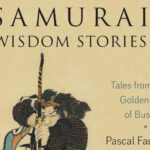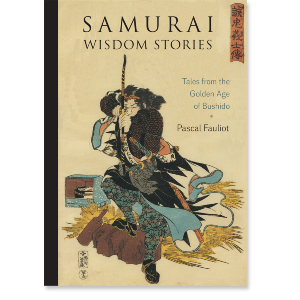With the introduction of firearms, the art of bow shooting was in danger of disappearing. However, this art was one of the principal disciplines of bushido, the Way of the Samurai. As a means of keeping this tradition alive, the annual Toshiya archery contest was instituted. The site of the contest was a temple in Kyoto known as Sanjusangen-do, famous for its thousand buddha statues.
The shooting took place in a covered galley about sixty meters long. The difficulty for the archer lay in keeping the shot tightly arced enough to avoid the thirty-three cross beams that supported the roof joists and still allow for a shot long enough to reach the target at the end of the gallery. The bow had to be a strong one, but not so strong as to exhaust the archer; for the winner was the one who was able to shoot the greatest number of arrows into the distant target. The contest lasted twenty-four hours, from sunrise until the following dawn. It was a true ordeal, an ascetic exercise comparable to the austerities practiced by Buddhist monks, such as ten thousand prostrations.
Going beyond one’s normal level of output as was required here was more than a matter of technique and endurance. It was only possible through the force of mind that allowed the archer to enter into an altered state where another level of energy could come into play.
The best archers of Japan, and through them the schools of kyu-jutsu they represented, were matched against each other in this contest. In 1679, Hoshino Kanzaemon achieved the feat of hitting the target with eight thousand of the 10,542 arrows he shot. Seventeen years later his feat was still unrivaled and he remained “the First under Heaven.”
In 1696, a young archer named Wasa Daihachiro presented himself at the contest. He had trained assiduously for years in order to meet this challenge. He shot without stopping for many hours and then, already having planted five thousand arrows in the target, he allowed himself a short pause. When he tried to resume shooting, he no longer able to bend his bow. His shoulders and back were so swollen that the pain was intolerable. At this point, one of the members of the jury who was seated on the tribunal rose to his feet and approached the unhappy competitor. He reproached him for having stopped shooting and drew his short sword from its sheath. He made cuts in the swollen flesh, the blood flowed, and the archer was once again able to bend his bow. He finally succeeded in shooting more than thirteen thousand arrows, of which 8,133 hit the target. He became the new “First under Heaven” and has not been bested since.
Wasa Daihachiro, after having achieved this feat, walked over to the tribunal in order to pay his obeisance to the judge who had helped him.
“I am very grateful to you,” he said, “for having made it possible for me to surpass the record of the great Hoshino Kanzaemon. Would you be so kind as to tell me your name?”
The master archer on the tribunal replied with a warm smile.
“You know it already, since you have just said it.”
By enabling his rival’s victory through his noble gesture, Hoshino Kanzaemon became a part of bushido legend. On the Way of the Samurai, there is no greater achievement than conquering
oneself.
—pages 99–101


